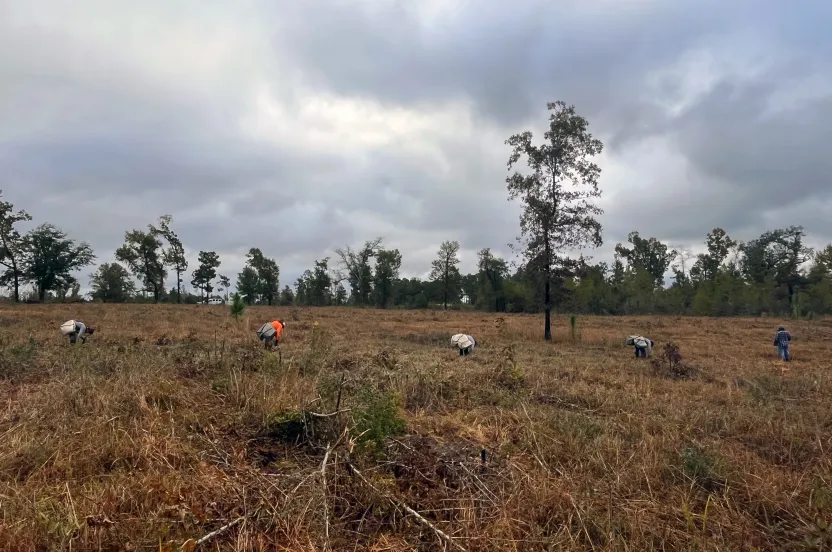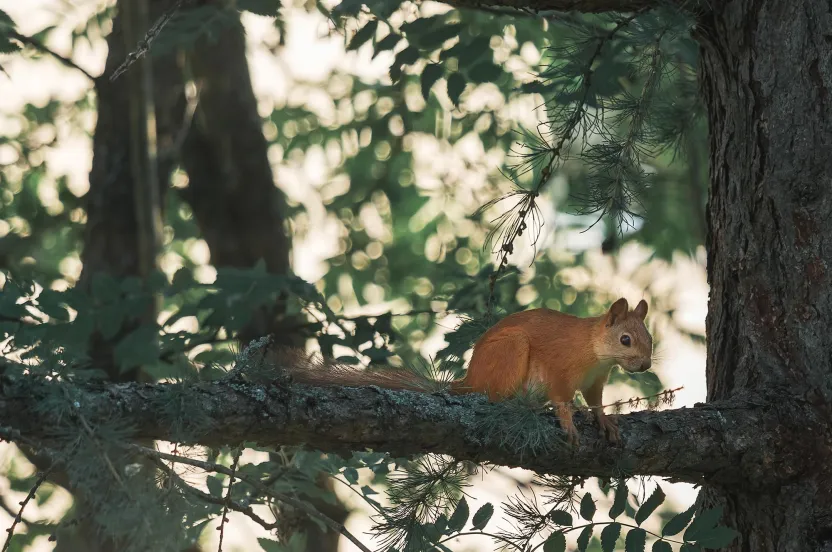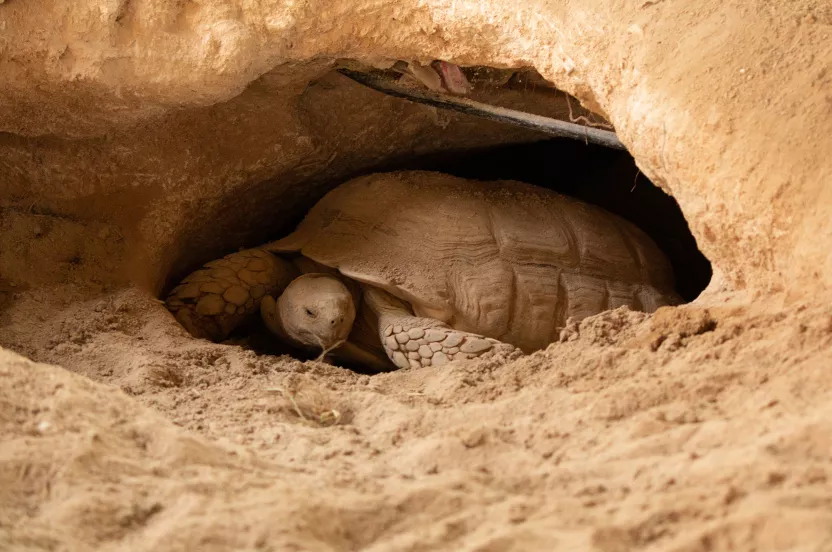Now live: The 2025 Canopy Report. Learn how Americans see trees. GET THE REPORT
The Race To Save Southern Pines
As beetle infestations devastate Southern forests, a race begins to save millions of acres—and an entire ecosystem
March 26, 2025

As spring arrives, forest managers brace for a tiny but devastating threat: the Southern Pine Beetle awakens.
Southern Pine Beetle outbreaks are one of the biggest threats to pine forests in Alabama, Florida, Georgia, Louisiana, Mississippi, and South Carolina. 2024 was the worst pine beetle outbreak year in more than two decades, more than 15,500 spots impacted almost 29,000 acres across four states, according to the Southern Pine Beetle Information Center.
The Arbor Day Foundation is working to help reforest areas impacted by these outbreaks by providing funding to reforest healthy, diverse ecosystems that are more resilient to the pests. The Foundation has supported the planting of over 50 million trees in Southeastern states in the last five years, including reforestation efforts related to pine beetle outbreaks.
“There used to be 90 million acres of longleaf pine in the south, and now we're down to around 5 million,” said Lauren Marshall, director of landscape restoration with the Arbor Day Foundation.
“A healthy longleaf pine ecosystem is much more resistant and resilient to an infestation of bark beetle than a stand of loblolly pine, for example. At the Arbor Day Foundation we work with our very knowledgeable on the ground partners and provide them with the funding they need to purchase longleaf pine seedlings and carry out reforestation projects that restore this critical ecosystem,” says Marshall.
The Beetles' Advantage
Southern Pine Beetles are always present in Southeastern US forests, but outbreaks happen when they start to attack vulnerable trees and the population overwhelms trees and natural predators.
Eric North, urban forestry program manager with the Arbor Day Foundation, says increasing global temperatures are also giving the beetles an advantage. Warmer winters allow the beetles to stay active and conditions like drought can make trees more vulnerable and stressed.

“Both the beetle and the trees that they live on have adapted to a set of environmental conditions, which means a certain amount of water, certain temperatures at specific times of year. And when that gets disrupted, it can favor one species over the other,” says North.
“In this case, it seems to be favoring the beetles.”
Southern Pine Beetles have been identified migrating further North in recent years, including outbreaks in forests in New York, New Jersey, and Massachusetts.
In Georgia alone, pine beetle outbreaks have killed $254 million worth of trees since the early 1970s.
“A lot of the forest land in the southeast is privately owned, and in Georgia, you know, forestry is one of our biggest industries, and so having an insect like Southern Pine Beetle do the damage that it does, it really impacts private landowners that have invested in forestry,” says Ryan Phillips, cost share coordinator at the Georgia Forestry Commission.
In addition to the economic consequences, these outbreaks can kill trees that are critical for wildlife habitat, including other insects and migrating birds. These concerns have brought the Arbor Day Foundation and state forestry agencies together to protect pine forests.
'Like A Wildfire' - Prevention
Southern Pine Beetles are smaller than a grain of rice but they are still considered one of the biggest threats to forests in the Southeastern U.S. The beetles create tunnels called galleries in the layer of the tree’s bark where it moves nutrients from the soil, allowing colonies of mites and fungus to also thrive.
Eventually the tree can no longer move nutrients up its trunk and will die.
While these outbreaks typically begin in a tree that’s vulnerable or injured, for example by a lightning strike or drought, it can quickly grow to impact many more trees in the area.
Phillips says the pine beetle population will spread exponentially as they move from a dead tree to nearby healthy trees, attracting more beetles the whole time.
“It kind of spreads like wildfire.”

Phillips said the most devastation from a pine beetle outbreak is when they get into overstocked stands with a lot of stressed trees, allowing the beetles to spread quickly and do a lot of damage.
Because of this, thinning forests is the best strategy to prevent outbreaks, similar to reducing the fuel load for wildfires. Healthier trees that face less competition can fight off pine beetle outbreaks and the extra space also makes it harder for pine beetles to move from tree to tree.
If an outbreak has already been identified, forest managers should create a “buffer zone,” says Phillips, similar to a fire break, to isolate the beetles from spreading to more trees.
After the Outbreak - Recovery
Landowners and forests face serious consequences from pine beetle outbreaks, including lost income and the substantial costs of removing impacted trees and replanting the area.
The broader forest ecosystem is also impacted by a large area of dead or removed trees. It can eliminate habitat for migrating birds, clear the way for invasive species to move in, and increase the risk of wildfire.
Phillips says it is difficult for forestry or timber companies to economically move equipment and personnel onto sites with small numbers of impacted trees. Loggers incur higher costs, which makes it more expensive for landowners. To economically remove the beetle-infested timber and help provide some financial relief to the landowner, loggers must harvest healthy, unimpacted trees as well, which involves larger acreage areas.
“That's where that reforestation piece comes in. So instead of just cutting a 100-foot buffer, a lot of times you end up cutting larger than that, and then you have an area to reforest,” says Phillips.
The Arbor Day Foundation funds cost sharing programs managed by the Georgia Forestry Commission to help cover the cost of seedlings in these situations. The Commission provides assistance for landowners to reforest their properties. Landowners also work with consultant foresters and tree planting contractors to reforest their sites. GFC foresters conduct tree planting performance checks once reforestation efforts are complete, which enables landowners to start the reimbursement process.
Phillips says most landowners in Georgia are not full-time forest managers so the support from the Arbor Day Foundation really helps provide resources and funding that would otherwise be tough for them to find on their own.
“Any funding they can get to help maintain that property they own and maintain forest as forest is really important.”



